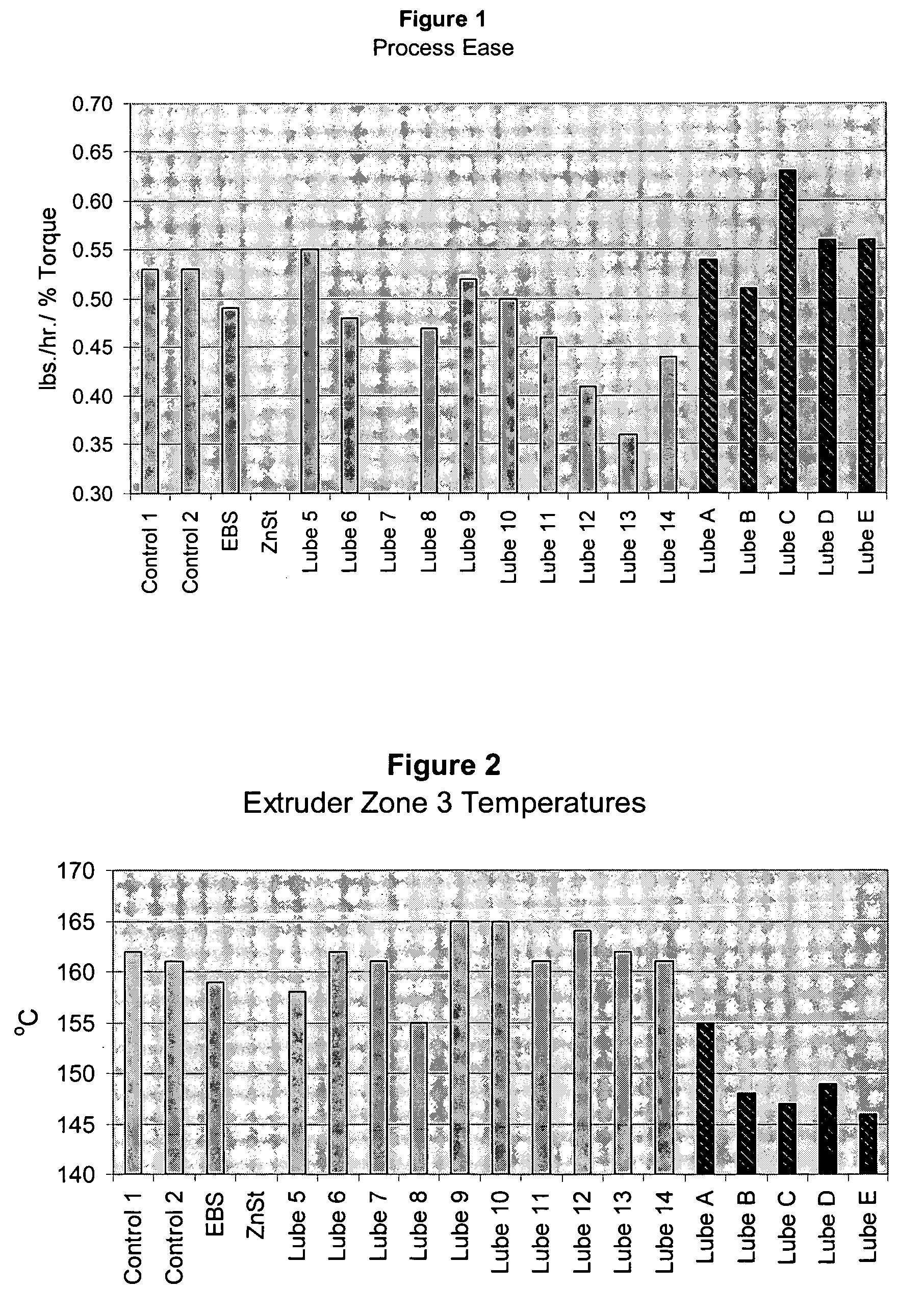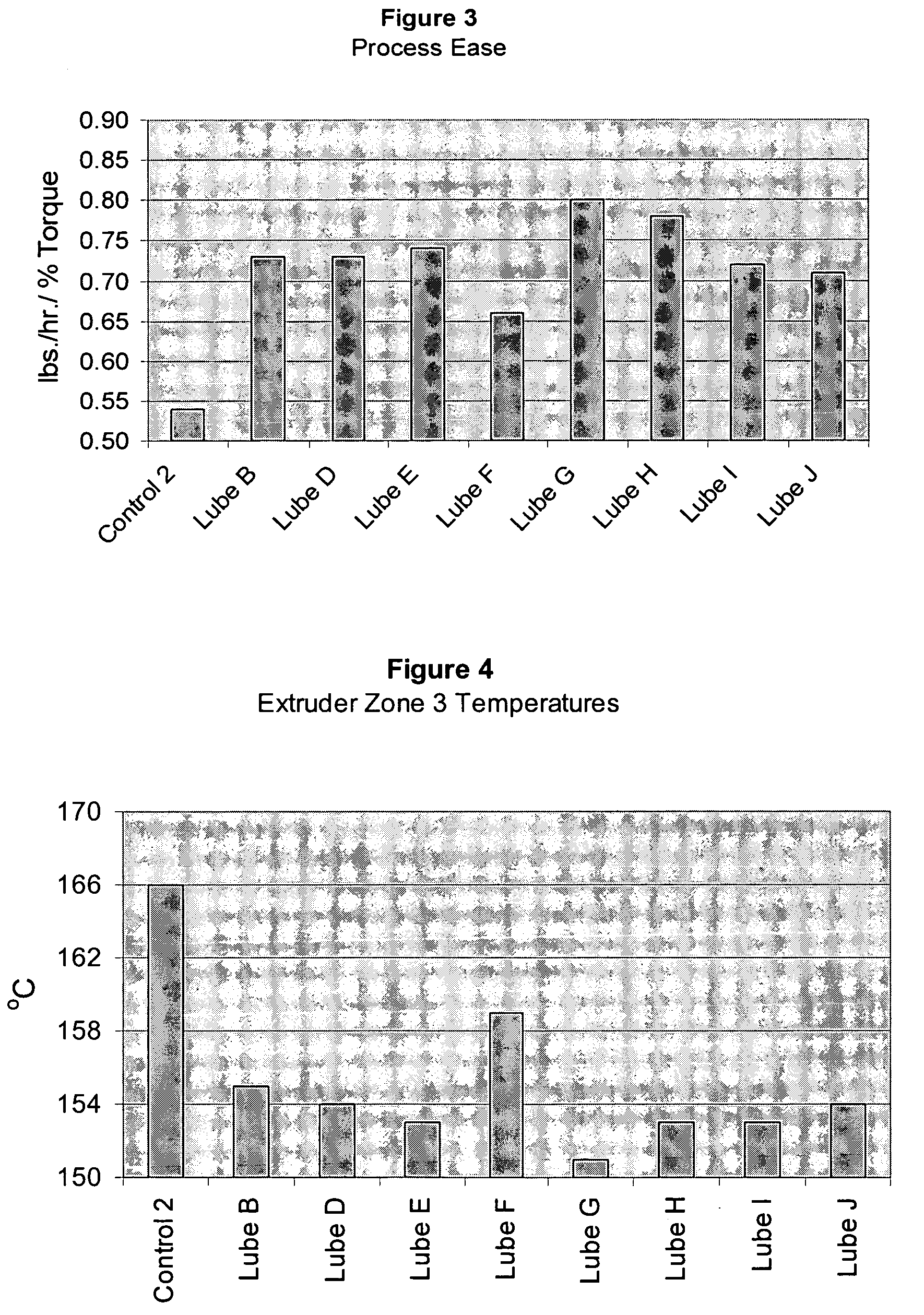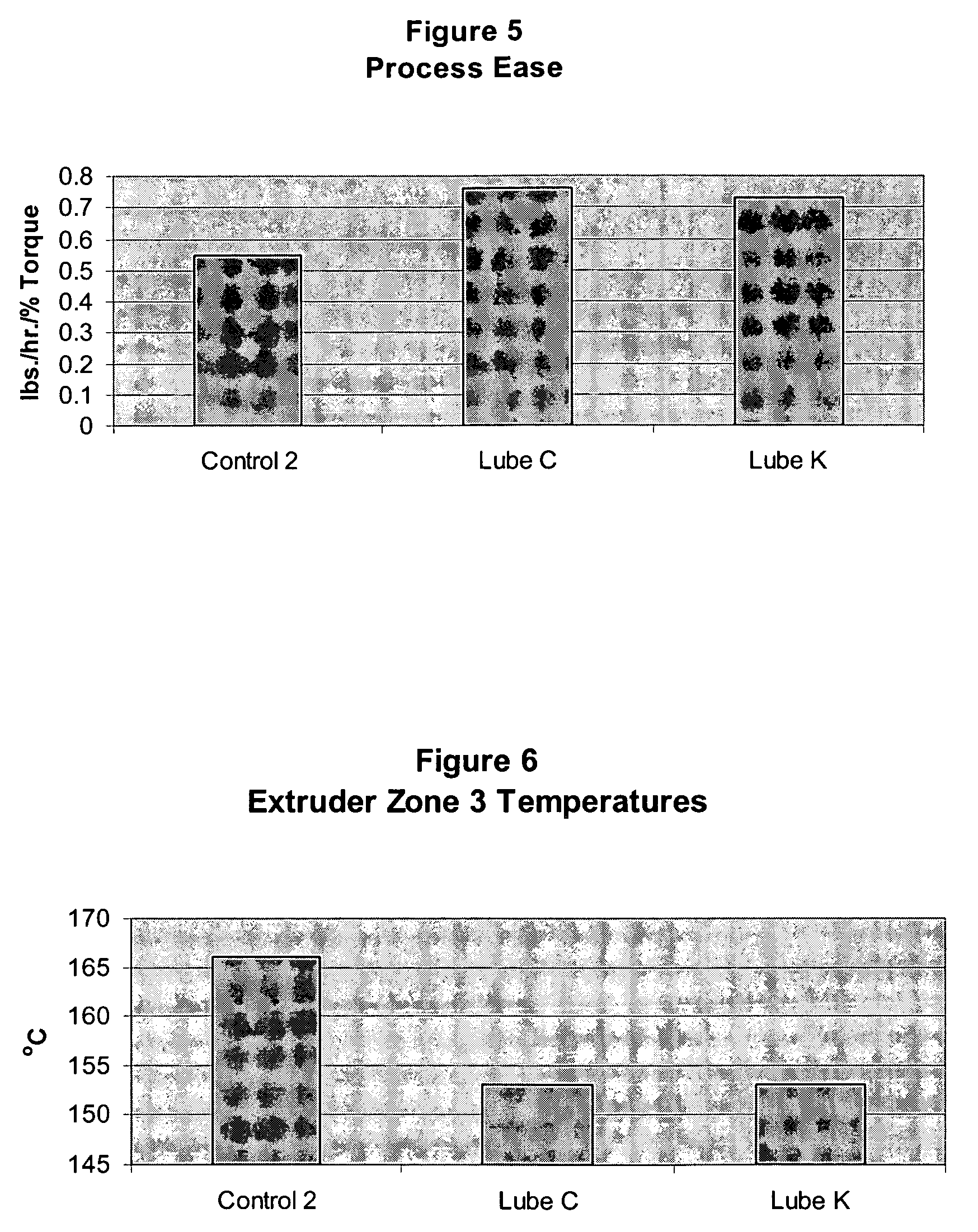Cellulose fiber-plastic composition containing a lubricant
a technology of cellulose fiber and composition, which is applied in the direction of transportation and packaging, wood layered products, chemistry apparatus and processes, etc., can solve the problems that vinyl chloride based thermoplastics are generally more difficult to process than olefin based thermoplastics, and achieve the effects of improving the dimensional stability of extruded profiles, reducing the temperature of the extruder, and increasing the output per percent extruder torqu
- Summary
- Abstract
- Description
- Claims
- Application Information
AI Technical Summary
Benefits of technology
Problems solved by technology
Method used
Image
Examples
example 1 (
EXAMPLE 1(d)
HDPE-Oak Wood Flour (and Other Fillers)
[0062] In this example, the extrudable composition was a product obtained from TimberTech. It is one of their commercially extrudable products without a lubricant. It is thought to contain a HDPE to oak wood flour ratio of about 45:55 and 5 to 10% talc. Lube L and a mixture of Lube L and Lube G were added to the material at 4 phc and the mixtures were extruded at 14 kg / hr. The ratio of Lube L to Lube G was 9:1. The results are shown in FIG. 8.
[0063] The mixture of Lube L and Lube G resulted in a 6.6% higher output than Lube L by itself. In Example 1(c), it is shown that Lube L was a superior lube compared to one of the commercially available lubricant packages used (i.e., EBS plus ZnSt).
example 2
HDPE-Pine Wood Flour
[0064] The extrudable composition in this example contained 40% of the same HDPE reactor powder as used in Example 1, 60% Pine 402050 (40 mesh) available from American Wood Fibers of Schofield, Wis., and 6 phc of Polar Minerals 9610 talc, available from Polar Minerals of Mentor, Ohio. A number of the better lubes in the foregoing HDPE-Oak compositions were evaluated in the HDPE-Pine Flour composite. The extruder speed for these runs was 175 rpm with the feed rate set at 16 kg per hour. The control lubricant packages for these formulations contained 1 phc EBS and 2 phc ZnSt as a one pack system (designated as “Control 3”) and as mixed separately (designated as “Control 4”).
[0065] The process ease results are shown in FIG. 9. They are similar to those in the HDPE / Oak composites. The one pack lube and the EBS and ZnSt, added separately, had within experimental error, the same process ease values. Lubes A, B, D and E had higher process ease values than the controls...
PUM
| Property | Measurement | Unit |
|---|---|---|
| melting temperature | aaaaa | aaaaa |
| wt. % | aaaaa | aaaaa |
| wt. % | aaaaa | aaaaa |
Abstract
Description
Claims
Application Information
 Login to View More
Login to View More - R&D
- Intellectual Property
- Life Sciences
- Materials
- Tech Scout
- Unparalleled Data Quality
- Higher Quality Content
- 60% Fewer Hallucinations
Browse by: Latest US Patents, China's latest patents, Technical Efficacy Thesaurus, Application Domain, Technology Topic, Popular Technical Reports.
© 2025 PatSnap. All rights reserved.Legal|Privacy policy|Modern Slavery Act Transparency Statement|Sitemap|About US| Contact US: help@patsnap.com



